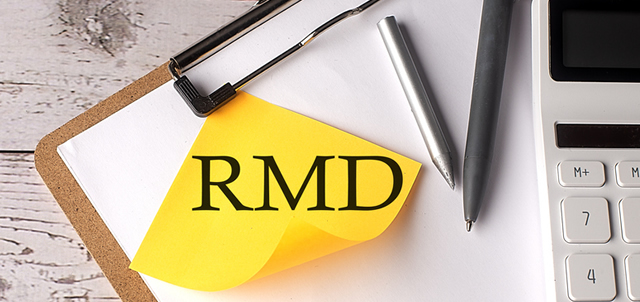Required Minimum Distributions: Know Your Deadlines

Did you know that, in most cases, you must start taking required minimum distributions (RMDs) from your retirement accounts each year once you reach age 73? IRS rules require that you take withdrawals from individual retirement accounts (IRAs) and employer-sponsored retirement plans to avoid costly penalties.
Be sure you understand the requirements about RMDs and how they apply to you.
What Are Required Minimum Distributions?
RMDs are minimum amounts that you must withdraw annually from your IRA—including traditional, SEP and SIMPLE plans—or other retirement plan account—including 401(k), profit-sharing, 403(b) and 457(b) plans—once you've reached the mandatory age for making withdrawals. Generally, you must begin taking RMDs by April 1 of the year following the year that you turn age 73, and you must take subsequent RMDs by December 31 of each year, beginning with the year in which you were required to make your first withdrawal.
That means that if you turned 73 in 2024, your first RMD is due by April 1, 2025. You must take your second RMD by December 31, 2025, and your third RMD by December 31, 2026.
There are no withdrawal requirements from Roth IRAs or Roth employer-sponsored plans until after the death of the account owner. However, beneficiaries who inherit Roth accounts are subject to RMD rules.
How Do I Calculate My RMD?
The RMD for any given year is the total account balance in your IRA, or IRAs, as of the end of the immediately preceding calendar year (i.e., the account value at year-end 2024 for tax year 2025), divided by a distribution period. You can find the distribution period using the IRS's Uniform Lifetime Table, or the IRA Required Minimum Distribution Worksheet if your spouse is the sole beneficiary and is more than 10 years younger than you.
Your IRA custodian—such as a bank or other financial institution—must either report the amount of the RMD or offer to calculate it for you. You can check this calculation using an online calculator such as FINRA’s Required Minimum Distribution Calculator.
Common RMD Questions
RMD rules can be complex, especially with respect to beneficiary distributions and the correction of miscalculations or missed RMD obligations. You might want to consult a tax professional, especially if this is the first time you’re taking a distribution.
Here are answers to some additional frequently asked questions related to RMDs for retirement accounts:
Can I withdraw more than the minimum required amount?
Yes. However, be aware that the amount of your RMD, as well as any amount that exceeds the RMD, will be considered taxable income except for any part that‘s specifically considered nontaxable (such as qualified distributions from designated Roth accounts).
If I do take more than the minimum amount, can a distribution that exceeds the RMD for one year be applied to the RMD for a future year?
No. Your RMD is calculated newly each year based on your account balance and the proper formula.
Can I just take the RMD from one account instead of separately from each account?
For traditional IRAs, you must calculate the RMD separately for each account that you own, but you can withdraw the total amount from one or more of the IRAs. Similarly, a 403(b) contract owner must calculate the RMD separately for each 403(b) contract but can take the total amount from one or more of the 403(b) contracts. However, RMDs required from other types of defined contribution plans, such as 401(k) and 457(b) plans, must be taken separately from each of those plan accounts.
What if I don't take any distributions, or if the distributions I take don’t meet the RMD amount?
You might have to pay a 25 percent excise tax on the amount not distributed. This drops to 10 percent if corrected within two years.
Can I postpone taking the RMD if I’m still working?
In most cases, you can postpone taking RMDs from a workplace retirement plan—like a 401(k), 403(b) or 457(b)—until you retire. There are exceptions, and this option isn’t available for IRAs. Consider speaking with an investment professional or a tax professional to make sure you’re following the rules.
Learn more from the IRS about retirement plan and IRA required minimum distributions.



